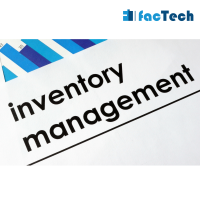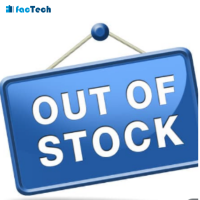Top 5 Inventory KPIs You Should Know
Are you managing your inventory properly? Did we send you down a rabbit hole of technical complexities? You should know if you have the right products available for your clients. But do you know what inventory insights are most significant? Yes, if you’re also able to optimise costs and enhance overall operational efficiency. Here are Key Performance Indicators (KPIs) in inventory management that you should know! Let’s first understand the essentials of inventory KPIs. Buckle up!
What are Inventory Management KPIs?
Inventory Management KPIs offer valuable insights into your inventory processes and efficiency. For instance, inventory turnover, stock-out rates, days sales of inventory (DSI), fill rates, carrying costs etc. are all your go-to metrics for stock optimization.
Now, what exactly is stock optimization? It’s about striking the right balance maintaining sufficient stock levels and minimizing excess inventory to reduce holding costs. Did you ask how can we achieve this? This process involves leveraging data-driven inventory insights and demand forecasting which again rely on a list of inventory KPIs.
Related Read: Inventory Management Best Facility Practices
In the next few sections, let’s catch a glimpse of the top 5 inventory KPIs.
How to get started with Inventory Management?
What are the Top 5 Inventory KPIs?
#1 Inventory Turnover Ratio

The very first inventory management KPI that we’ll elaborate on is the Inventory Turnover Ratio. It evaluates how quickly you sell your inventory. Here’s a little maths:
Divide the cost of goods sold (COGS) by the average inventory for the same period. If the inventory turnover ratio turns out to be high, you are in for a treat as the goods are selling like hotcakes.
You can further analyze and compare your KPI with the industry benchmarks, seasonal variations, and market demand fluctuations. In essence, you can get an idea of replenishing stock replenishment schedule, optimal order quantities, and any other supply chain inefficiencies.
Related Read: How to Save Lacs with Inventory Management Software?
#2 Stock-Out Rate is Yet Another Inventory KPI

Ever witnessed a stock-out situation? We feel you. We’re here with another insightful inventory KPI that can help dodge such nightmares. The stock-out rate is a critical KPI that measures the frequency and impact of stock-outs.
Simply divide the number of stock-outs by the total number of opportunities for a stock-out (usually the total number of sales or order requests) and multiply by 100 to express it as a percentage.
Watch out for high stock-out rates as these can have devastating consequences like lost sales and damage to the company’s reputation. Therefore, you can optimize reorder points and improve demand forecasting using stock out rate as a KPI.
#3 Days Sales as Inventory KPIs
DSI or Days Sales of Inventory is another essential inventory KPI for you to monitor. It gives you insights into the number of days it takes for your company to turn its inventory into sales. Let’s see how we can calculate this metric.
Divide the average inventory by the cost of goods sold (COGS) and multiply the result by the number of days in the period.
We would recommend a lower DSI as it’s an indicator of a faster inventory turnover. However, the optimal DSI varies across industries, and it’s essential to consider the nature of the business, market conditions, and product shelf life.
#4 Fill Rate as a Crucial Inventory Insight
Have you heard about the fill rate? It’s a crucial inventory insight that measures the percentage of customer demand fulfilled by the available inventory within a specific timeframe. Here’s the maths involved-
Divide the number of items shipped in full by the total number of items ordered and multiply the result by 100.
If your fill rates are low, your business might be suffering from backorders, delayed shipments, and potential loss of customers to competitors. Therefore, keep a close eye on this inventory metric and work on timely order fulfilment.
Related Read: What are different reports in the Inventory Management System?
#5 Carrying Costs as Inventory KPIs

Finally, we’re here with the dreadful cost of carrying. As you might be aware, there are different carrying costs for your inventory such as storage, insurance, and depreciation. Therefore, we can define the carrying cost of inventory as a KPI that quantifies the financial impact of holding and maintaining inventory over a specific period. How do we calculate this inventory management KPI? Here you go-
Multiply the average inventory value by the carrying cost percentage.
Wondering why should you monitor this metric in the KPI in the first place? Use this metric strategically to reduce excess stock, implement just-in-time inventory practices, and negotiate favourable terms with suppliers to minimize holding costs.
Related Read: How to Choose Best Inventory Management Software?












